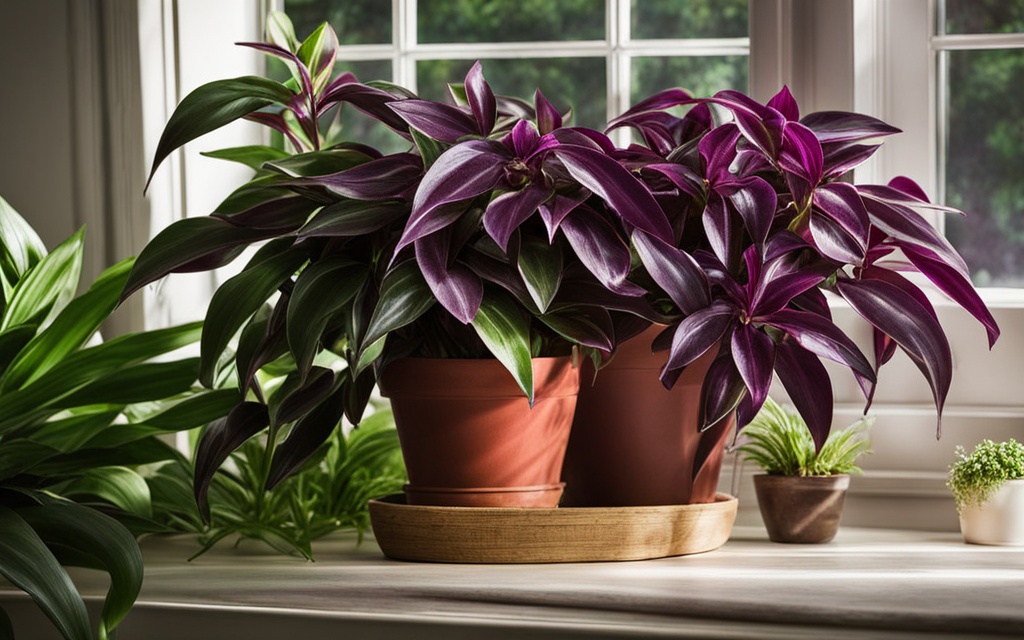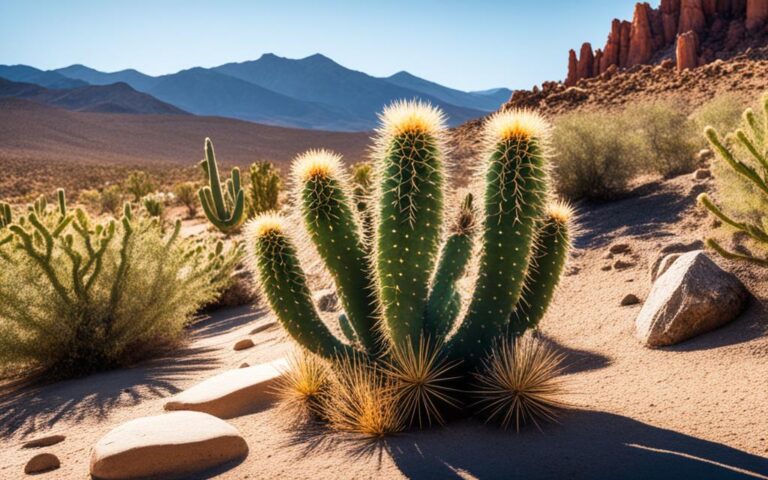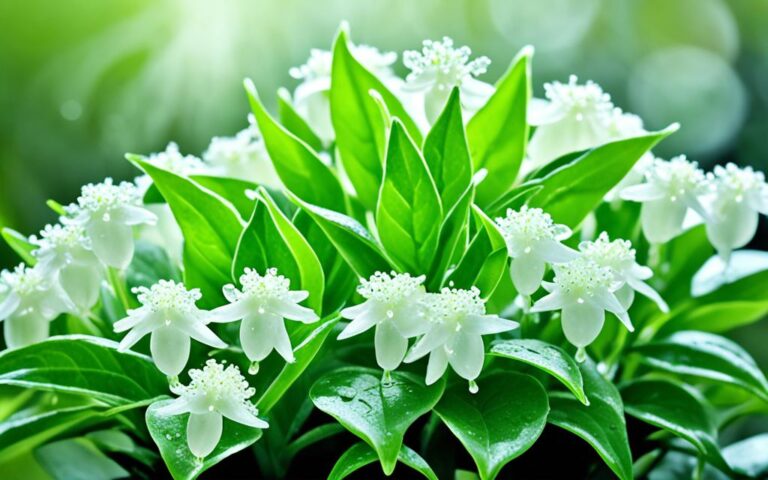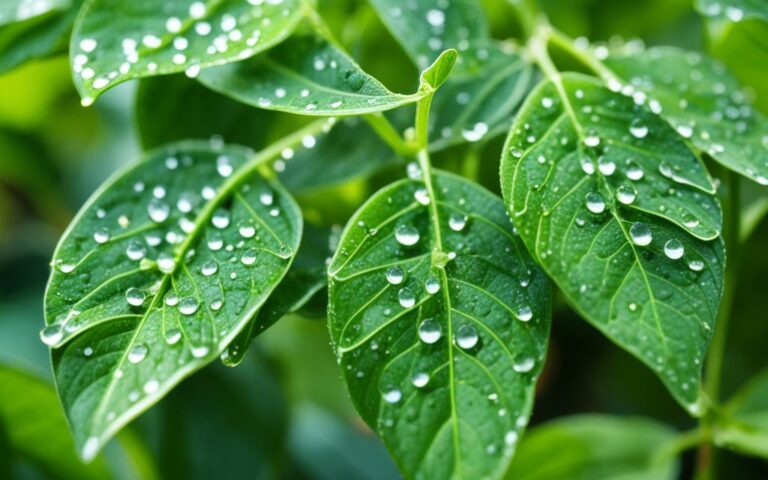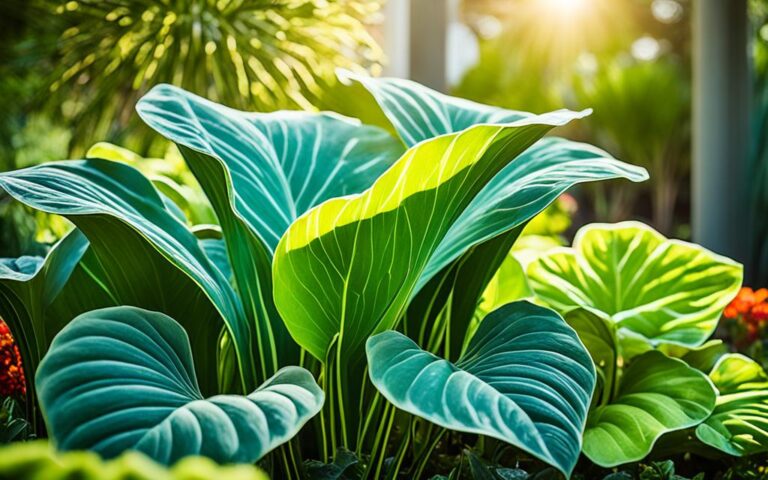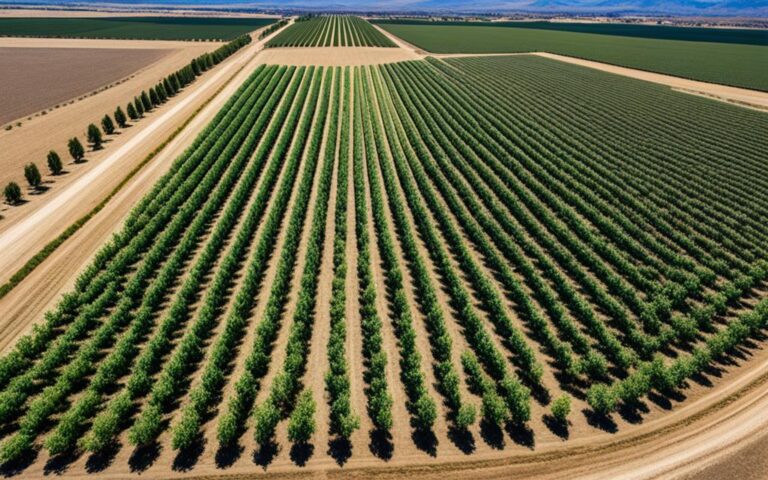Wandering Jew Plant Care: Essential Tips & Tricks
Did you know there are over 70 types of Tradescantia plants, also known as Wandering Jew? These plants are loved for their bright colors and how easy they are to care for. They’re perfect for anyone who loves plants, whether you’re new to gardening or have years of experience.
To keep these plants looking their best, it’s important to know how to care for them. This includes understanding their lighting, temperature, and watering needs. By following a few simple tips, you can enjoy the beauty of Wandering Jew plants in your home.
Key Takeaways
- Wandering Jew plants thrive in bright, indirect light and prefer temperatures between 50-80°F (10-27°C).
- Well-draining, moist soil and biweekly fertilization during the growing season are important for optimal growth.
- Pruning and repotting annually help maintain the plant’s shape and prevent root rot.
- Proper watering techniques and addressing pests like aphids are crucial for the plant’s overall health.
- Wandering Jew plants are easy to propagate, making them a great choice for beginner plant enthusiasts.
Introduction
Wandering Jew plants are also known as “inch plants” or “wandering dudes.” They are popular houseplants loved for their vibrant foliage and easy care. These plants come from the Tradescantia genus, which has over 75 species native to North and South America.
Importance and Popularity of Wandering Jew Plants
Wandering Jew plants are popular for their versatility and easy care. Over 70 varieties are grown worldwide. The Tradescantia zebrina, with its bright purple leaves, is especially loved for its hardiness and fast growth.
Overview of Common Tradescantia Species
Three main Tradescantia species are commonly used as houseplants: T. fluminensis, T. zebrina, and T. pallida. Each has unique leaf patterns and colors. They do well in bright, indirect light and need moderate watering, making them great for all gardeners.
| Tradescantia Species | Leaf Characteristics | Popularity |
|---|---|---|
| Tradescantia fluminensis ‘Quicksilver’ | Silver-green foliage with purple undersides | Highly popular due to its distinctive coloration |
| Tradescantia zebrina ‘Tricolor’ | Purple, green, and silver striped leaves | One of the most commonly grown Tradescantia varieties |
| Tradescantia pallida ‘Purple Heart’ | Vibrant purple leaves with a hint of silver | Appreciated for its striking color and compact growth habit |
Wandering Jew plants are loved for their versatility and easy care. This has made them a favorite in many homes and gardens.
Wandering Jew Plant Varieties
The term “wandering jew” covers three Tradescantia species grown indoors: Tradescantia fluminensis ‘Quicksilver’, Tradescantia zebrina ‘Tricolor’, and Tradescantia pallida ‘Purple Heart’. Each type looks different but needs the same care.
Tradescantia fluminensis ‘Quicksilver’
Tradescantia fluminensis ‘Quicksilver’ has shiny, oval leaves that look silver. It comes from southeastern Brazil and has white flowers. It can grow up to 14 inches tall and does well in zones 9-11.
Tradescantia zebrina ‘Tricolor’
Tradescantia zebrina ‘Tricolor’ stands out with leaves in purple, green, and silver. It’s from southern Mexico and Guatemala. This type can grow up to 6 feet long.
Tradescantia pallida ‘Purple Heart’
Tradescantia pallida ‘Purple Heart’ is known for its purple leaves with red or green tips. It’s from eastern Mexico and blooms in white, pink, or lavender in summer.
Each Tradescantia type has its own look but they all need the same care. They make great indoor plants.
| Variety | Leaf Color | Flower Color | Native Region | Plant Height |
|---|---|---|---|---|
| Tradescantia fluminensis ‘Quicksilver’ | Green with silver sheen | White | Southeastern Brazil | Up to 14 inches |
| Tradescantia zebrina ‘Tricolor’ | Purple, green, and silver | N/A | Southern Mexico and Guatemala | Up to 6 feet |
| Tradescantia pallida ‘Purple Heart’ | Purple with red or green tips | White, pink, or lavender | Eastern Mexico | Up to 14 inches |
Plant Anatomy and Characteristics
The wandering jew plant is known for its trailing, vining growth habit and eye-catching foliage. Its leaves are heart-shaped and come in many colors like solid green, purple, silver, and green patterns. These leaves stick to stems that can grow roots at the joints, letting the plant spread and trail.
Occasionally, small flowers in white, pink, or lavender may show up. But the wandering jew plant is really known for its bright and beautiful leaves. These plants are tender perennials that do well in warm places all year. In cooler areas, they are often grown as annuals or houseplants.
| Characteristic | Measurement |
|---|---|
| Height | 6 to 8 inches (15.2 to 20.3 cm) |
| Spread | 12 to 24 inches (30.5 to 61.0 cm) |
| USDA Hardiness Zones | 8 to 12 |
| Native Habitat | Southern Mexico and Central America |
The wandering jew plant, also called the “inch plant,” is a favorite in North America. It’s loved for being easy to care for and looking great. Its unique way of growing and bright leaves make it a great choice for any indoor or outdoor garden.
wandering jew plant care
Light Requirements
The wandering jew plant loves bright, indirect light. It can handle some direct sun in the morning or evening. But too much direct light can make the leaves fade or burn.
An east or west-facing window is ideal for these plants. It gives them the right amount of light.
Temperature and Humidity Needs
Wandering jew plants do well in warm temperatures between 60-80°F. They also need high humidity, around 70%. Keep them away from cold drafts and frost to prevent damage.
If you live in USDA hardiness zones 9-11, your plant might survive light frosts. But, bring container-grown plants inside if it gets colder than 60°F.
Keeping the right wandering jew plant temperature needs and wandering jew plant humidity needs is key. This ensures your plant stays healthy and looks great indoors or outside.
“Proper lighting and temperature control are essential for keeping a wandering jew plant happy and healthy.”
Soil and Potting Mix
Getting the right soil is key for wandering jew plants to grow well. These plants love soil that drains well and is full of organic matter. A mix of equal parts potting soil, perlite or coarse sand, and peat moss or compost works great for wandering jew plant soil.
This mix helps keep the soil moist but not too wet, letting the roots breathe. It stops root rot from happening. The best wandering jew plant soil pH is a bit acidic, between 5.0 and 6.0. A little lime in the mix keeps the pH right for the plant.
Ideal Soil Composition
- Potting soil
- Perlite or coarse sand
- Peat moss or compost
Maintaining Proper Soil pH
The perfect wandering jew plant potting mix has a pH of 5.0 to 6.0. A bit of lime in the soil keeps the pH just right for these plants.
“Wandering Jew plants prefer light-weight, well-draining soil for optimal growth.”
Watering Wandering Jew Plants
Getting the watering right is key for your wandering jew plant’s health and life span. These plants like soil that’s always a bit moist but not too wet. Water when the top half inch of soil feels dry, then soak the soil well until water flows out of the pot’s bottom.
Don’t let the soil dry out or keep the plant in standing water, as this can cause issues. Wandering jew plants can easily get root rot. So, it’s vital to keep the soil just right. Also, these plants need the right humidity level. Mist the leaves or use a pebble tray to keep the air around the plant moist.
- Water when the top 1/2 inch of soil feels dry
- Thoroughly soak the soil until water drains from the bottom
- Avoid letting the soil completely dry out or sitting in standing water
- Mist the leaves regularly or use a pebble tray to increase humidity
Follow these watering tips to keep your wandering jew plant looking lush and vibrant. Remember, being consistent with wandering jew plant watering is crucial.
“Proper watering is the foundation for a healthy and happy wandering jew plant.”
Fertilizing for Optimal Growth
To keep your wandering jew plant looking great, you need to fertilize it right. These plants need a mix of nutrients to stay healthy and grow well. Give them a diluted, water-soluble 10-10-10 fertilizer every two weeks when they’re growing.
Don’t forget to dilute the fertilizer to half strength to protect the leaves. You can also use a slow-release granular fertilizer once a year. This gives nutrients over a longer time. Mixing regular liquid feed with yearly granular boosts will keep your plant healthy.
Right fertilizing, along with proper light, temperature, and moisture, keeps wandering jew plants looking lush. Follow this easy feeding plan for a plant that will make your indoor garden stand out.
| Nutrient | Importance for Wandering Jew Plants |
|---|---|
| Nitrogen (N) | Promotes healthy, green leaf growth |
| Phosphorus (P) | Supports strong root development and flowering |
| Potassium (K) | Enhances overall plant vigor and disease resistance |
| Calcium (Ca) | Strengthens cell walls and improves nutrient uptake |
| Magnesium (Mg) | Aids in chlorophyll production for vibrant foliage |
| Iron (Fe) | Ensures healthy, green leaves and prevents chlorosis |
“Proper fertilization is the key to keeping your wandering jew plant lush, vibrant, and thriving.”
Pruning and Training Techniques
Keeping your wandering jew plant looking lush and full is easy with regular pruning. These plants can get long and sparse if not trimmed. With some simple tips, you can keep them looking great.
Controlling Legginess
To stop legginess, cut off any stems that are too long or trailing. Cut just above a leaf node. This will make the plant grow more stems below, making it fuller.
Use special pruners or bonsai shears for clean cuts. These tools are perfect for the plant’s delicate stems.
Promoting Bushiness
Pinning or cutting the stem tips also helps make the plant bushier. Do this in spring and early summer when the plant is growing a lot. Always cut just above a leaf node to encourage new growth.
Adding these pruning and training steps to your care routine keeps your wandering jew plant looking great. By trimming and shaping the plant, you’ll enjoy its beautiful foliage and vines for many years.
| Pruning Tip | Key Benefit |
|---|---|
| Cut back long, leggy stems | Encourages bushy, compact growth |
| Pinch or trim stem tips | Promotes lateral branching and fuller shape |
| Use precision pruning tools | Ensures clean, accurate cuts on delicate stems |
| Prune during active growth (spring/summer) | Maximizes the plant’s response and recovery |
Propagation Methods
Wandering Jew plants are easy to spread from stem cuttings. They’re perfect for sharing with friends or growing more in your garden. Their easy propagation makes them a great choice for gardeners on a budget.
Propagating in Soil
To grow wandering jew plants in soil, cut 4-6 inch pieces just below a leaf node. Remove the bottom leaves and plant them in a potting mix that drains well. Keep the soil moist, and you’ll see new growth in a few months. They prefer bright, indirect light to avoid leaf burn.
Propagating in Water
Propagating in water is also easy. Put the cuttings in a glass of water, changing it often, until roots appear. Then, you can move them to soil. These plants root quickly, making them ideal for sharing or growing more.
Spring and summer are the best seasons for propagation. The plant grows actively then, boosting the chances of successful rooting. Mature plants work better for propagation because they have strong root systems.
Wandering Jew plants are a joy to have in any garden, indoor or outdoor. With these simple steps, you can easily increase your collection. Share the beauty and resilience of these plants with others.
Pests and Disease Management
Wandering jew plants are tough but can face pests and diseases. Knowing the common problems and how to prevent them helps keep your plants healthy.
Common Pests
Spider mites and aphids often bother wandering jew plants. These tiny pests love the plant’s lush leaves and can spread quickly. To keep them away, keep the air around the plant moist and mist the leaves often. For big infestations, insecticidal soap or neem oil can help.
Preventing and Treating Diseases
Wandering jew plants can get fungal diseases like root rot, leaf spot, and powdery mildew. These usually happen when the soil drains poorly or the plant gets too much water. To stop and treat these, make sure the soil drains well, water less often, and cut off any sick leaves. Good air flow and regular pruning also help fight fungal infections.
| Pest or Disease | Symptoms | Prevention and Treatment |
|---|---|---|
| Spider Mites | Fine webbing, stippling or discoloration on leaves | Maintain high humidity, mist regularly, use insecticidal soap or neem oil |
| Aphids | Clusters of small, sap-sucking insects on leaves and stems | Maintain high humidity, mist regularly, use insecticidal soap or neem oil |
| Root Rot | Wilting, yellowing, or browning of leaves, foul-smelling soil | Improve drainage, reduce watering, inspect and remove affected roots |
| Leaf Spot | Brown or black spots on leaves, often with a yellow halo | Improve air circulation, prune affected leaves, use fungicide if necessary |
| Powdery Mildew | White, powdery growth on leaves and stems | Improve air circulation, prune affected growth, use fungicide if necessary |
By watching closely and dealing with pests or diseases fast, you can keep your wandering jew plants looking great.
Repotting and Transplanting
As your wandering jew plants grow, they will need a bigger home. This happens every 1-2 years, when roots start coming out of the pot or the plant is too big. It’s key to repot them to keep them healthy and growing well.
When it’s time, pick a pot that’s 1-2 inches wider than the old one. Use fresh, well-draining soil. Be careful when moving the plant to avoid hurting the roots. You can move them outside in warm places, but do it slowly to prevent shock.
Steps for Repotting Wandering Jew Plants
- Choose a new pot that is 1-2 inches wider than the current one, with adequate drainage holes.
- Prepare a well-draining potting mix, such as a blend of potting soil, perlite, and peat moss.
- Gently remove the plant from the old pot, being careful not to damage the roots.
- Place the plant in the new pot and fill in the gaps with the fresh potting mix.
- Water the plant thoroughly to settle the soil and eliminate any air pockets.
- Place the repotted plant in a spot with bright, indirect light.
Transplanting Wandering Jews Outdoors
If you live in a warm area, you can move your wandering jew outside. But, you must slowly get the plant used to its new spot to avoid shock. Start by putting the plant in the shade for a few days. Then, slowly increase the sunlight over a week or two.
| Characteristic | Wandering Jew Plant |
|---|---|
| Native Region | Tropical regions of Mexico, Central America, and South America |
| Botanical Name | Tradescantia zebrina |
| Optimal Temperature | 60-75°F (15-24°C) |
| Lighting Needs | Bright, indirect light |
| Propagation Method | Stem cuttings |
By following these tips for wandering jew plant repotting and wandering jew plant transplanting, you can keep your plants happy and looking great for many years.
Benefits of Growing Wandering Jew Plants
Wandering Jew plants are loved by both new and experienced gardeners. They add elegance with their trailing habit, whether in a hanging basket or on a shelf. Their leaves come in various colors like greens, purples, and silvers, making any room look better.
These plants are easy to care for, perfect for busy people or beginners. They can grow well in many conditions. Plus, you can easily share or grow more plants from cuttings.
- Trailing, cascading habit for elegant, eye-catching displays
- Vibrant foliage in shades of green, purple, and silver
- Low-maintenance and tolerant of diverse growing conditions
- Easy to propagate, enabling you to share cuttings or grow your own collection
Wandering Jew plants are good for your health too. They clean the air by removing harmful gases. This makes your home healthier. Plus, having these plants can reduce stress and improve your mood.
For anyone into gardening or just starting with indoor plants, Wandering Jew plants are a great choice. They look beautiful, are easy to care for, and might even make you feel better. These plants add joy and color to your space.
Conclusion
Wandering Jew plants are easy to care for and add color to any space. They thrive with the right light, water, temperature, and food. These plants are perfect for anyone who loves plants or is just starting out.
This guide has given you all you need to grow and care for your own Wandering Jew plant. You now know how to provide the best conditions for their growth. From the right amount of light to how to keep pests away, you’re set.
Why not bring the beauty of these plants into your home or office? With the tips from this article, you can make your space look amazing. Start your plant-growing adventure and see the joy of having a Wandering Jew plant.
